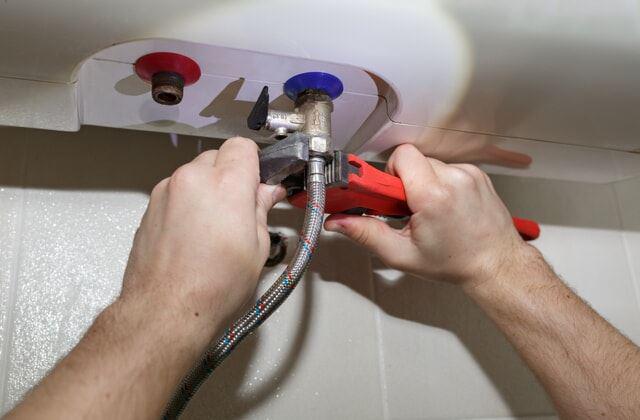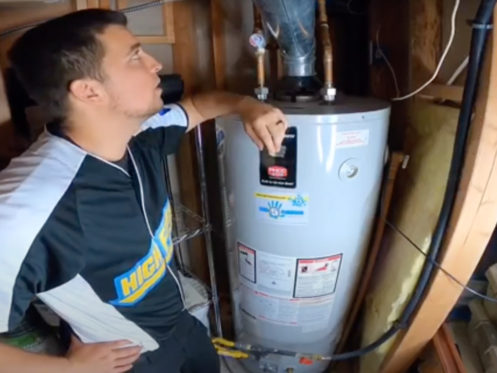Essential Advice on Caring for Your Home's Hot Water SystemSimple Guide to Maintaining Your Home's Hot Water SystemSteps to Effectively Care for Your Home's Hot Water System
Essential Advice on Caring for Your Home's Hot Water SystemSimple Guide to Maintaining Your Home's Hot Water SystemSteps to Effectively Care for Your Home's Hot Water System
Blog Article
Everyone seems to have their own unique theory involving Tips on Maintaining a Water Heater.

Hot water is vital for everyday convenience, whether it's for a rejuvenating shower or cleaning meals. To guarantee your warm water system runs efficiently and lasts longer, routine maintenance is key. This short article gives functional pointers and understandings on how to keep your home's hot water system to prevent disruptions and expensive fixings.
Intro
Maintaining your home's warm water system might appear challenging, yet with a few basic actions, you can guarantee it runs smoothly for many years to find. This overview covers every little thing from comprehending your hot water system to do it yourself upkeep pointers and understanding when to contact professional aid.
Significance of Maintaining Your Hot Water System
Regular upkeep not just expands the lifespan of your warm water system yet additionally ensures it runs successfully. Ignoring upkeep can bring about reduced performance, higher power bills, and even early failure of the system.
Signs Your Warm Water System Needs Upkeep
Knowing when your warm water system needs focus can stop significant problems. Keep an eye out for signs such as irregular water temperature, weird sounds from the heating system, or rusty water.
Understanding Your Hot Water System
Before diving into maintenance tasks, it's practical to understand the basic elements of your warm water system. Commonly, this includes the hot water heater itself, pipelines, anode poles, and temperature controls.
Monthly Upkeep Tasks
Routine regular monthly checks can assist catch small problems prior to they escalate.
Purging the Hot Water Heater
Flushing your hot water heater removes sediment buildup, improving efficiency and lengthening its life.
Checking and Replacing Anode Rods
Anode rods avoid rust inside the container. Examining and replacing them when worn out is important.
Checking and Readjusting Temperature Setups
Readjusting the temperature setups guarantees ideal performance and security.
DIY Tips for Upkeep
You can do a number of maintenance jobs yourself to maintain your warm water system in top problem.
Looking for Leaks
On a regular basis evaluate pipelines and connections for leakages, as these can cause water damage and greater bills.
Examining Stress Alleviation Valves
Checking the pressure safety valve guarantees it operates appropriately and avoids too much stress buildup.
Shielding Pipes
Protecting hot water pipes decreases warm loss and can conserve power.
When to Call a Professional
While DIY upkeep is useful, some problems require professional knowledge.
Complex Concerns Calling For Expert Assistance
Examples include major leakages, electrical issues, or if your water heater is regularly underperforming.
Regular Professional Upkeep Conveniences
Expert upkeep can include complete examinations, tune-ups, and making certain conformity with safety requirements.
Conclusion
Normal maintenance of your home's hot water system is essential for performance, long life, and expense savings. By adhering to these tips and knowing when to look for expert assistance, you can guarantee a trustworthy supply of warm water without unexpected interruptions.
Water Heater Maintenance Tips
Test the TPR Valve
Shut off the power and the cold-water supply valve. Place a bucket under the pipe connected to the temperature-pressure-release (TPR) valve on the top or side of the tank. (This valve opens if the tank pressure gets too high.) Lift the valve’s tab to let some water out, then let go. If water keeps flowing, drain the tank partway, unscrew the old valve with a pipe wrench, and install a new one. Check the Anode Rod
Put a hose to the tank’s drain cock and let out a few gallons of water. Now fit a 1 1/16-inch socket onto the rod’s hex head on top of the heater (or under its top plate) and unscrew the rod. If it’s less than ½ inch thick or coated with calcium, buy a new one, wrap its threads with Teflon tape, put it back in the tank, and tighten securely. Use this segmented rod if headroom above the tank is limited. Drain the Tank and Wash Out Sediment
Drain the remaining water in the tank into the bucket, then stir up the sediment on the tank’s bottom by briefly opening the cold-water supply valve. Drain and repeat until clean water comes out of the hose. Close the drain cock, refill the tank, and turn its power back on. Adjust the Temperature
Find the temperature dial on the side of the tank and unscrew its cover. Adjust the dial to 120 degrees using a flathead screwdriver. For every 10 degrees the temperature is lowered, you can expect to save up to 5 percent in energy costs. Turn the water heater off or the thermostat down to its lowest setting if you plan to be away from home for more than three days. Insulate the Pipes
Buy some self-sticking 3/8-inch-thick foam pipe insulation that matches the pipes’ diameter. Slide the foam over the hot-and cold-water pipes as far as you can reach. Insulating the cold-water pipe prevents condensation in summer. Peel the tape and squeeze the insulation closed. If the pipe is 6 inches or less from the flue, cover it with 1-inch-thick unfaced fiberglass pipe wrap. https://www.thisoldhouse.com/plumbing/21016402/how-to-maintain-a-water-heater

I recently found that piece on What Kind of Maintenance Do Water Heaters Need? while doing research the web. Sharing is caring. Helping others is fun. Thank-you for your time invested reading it.
Pricing Report this page